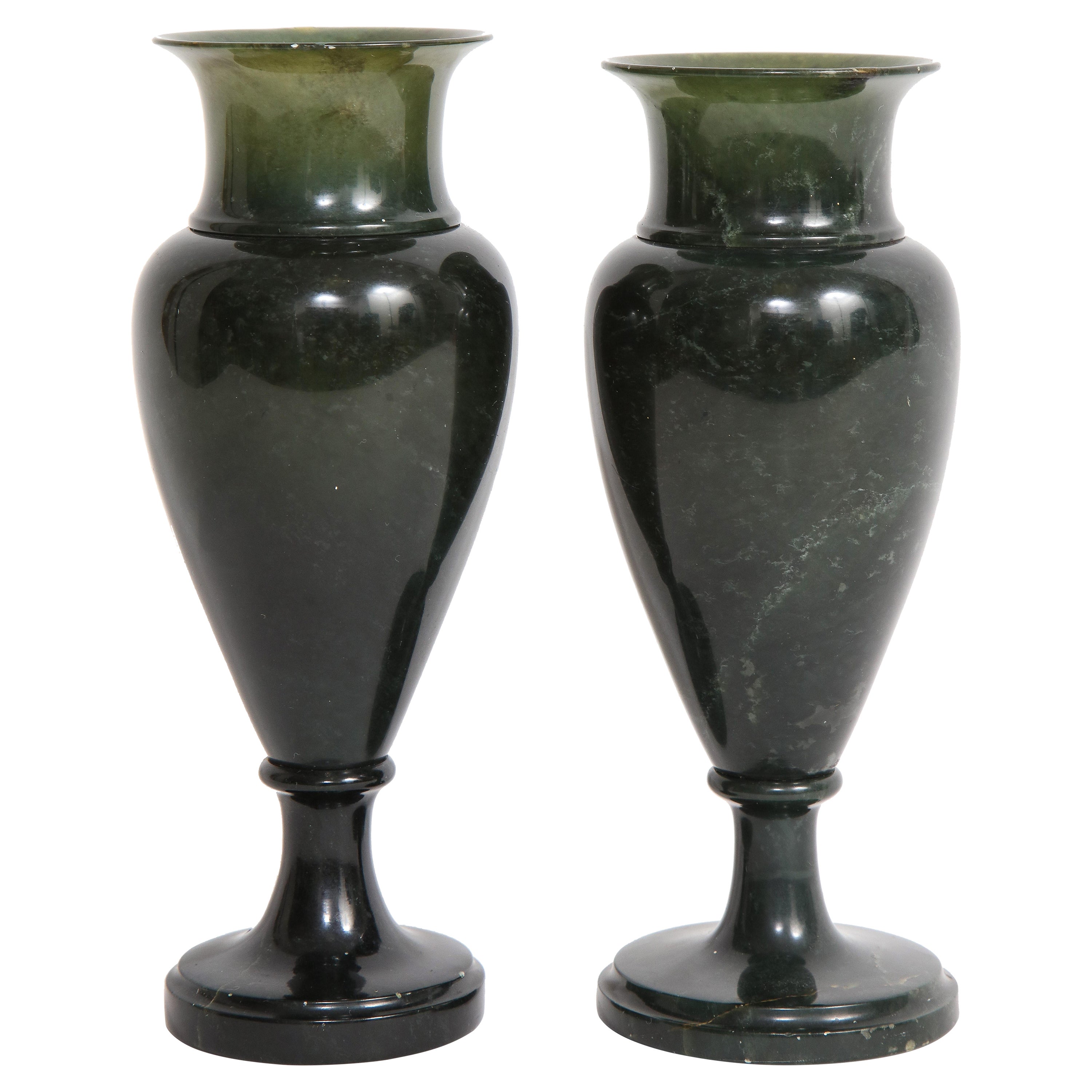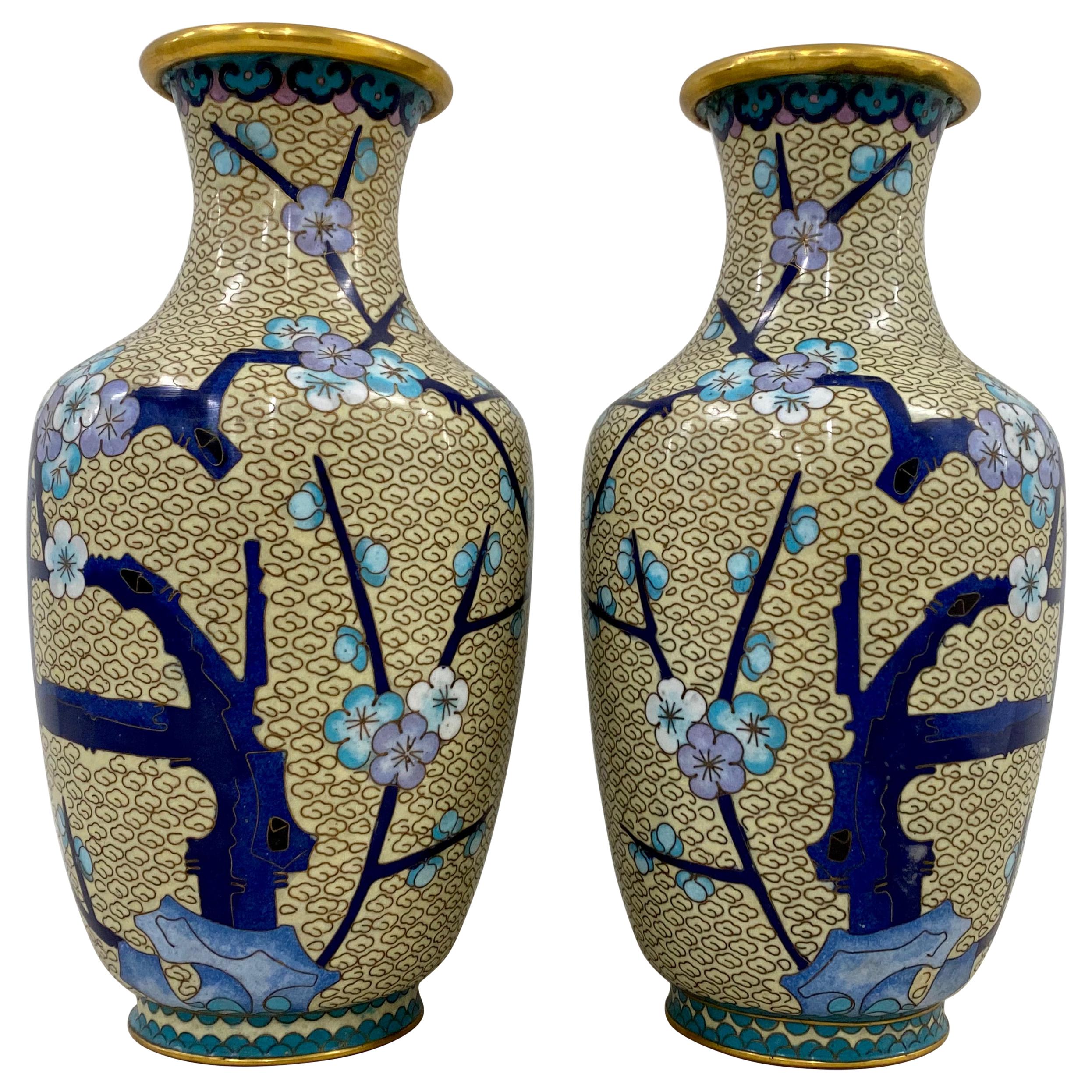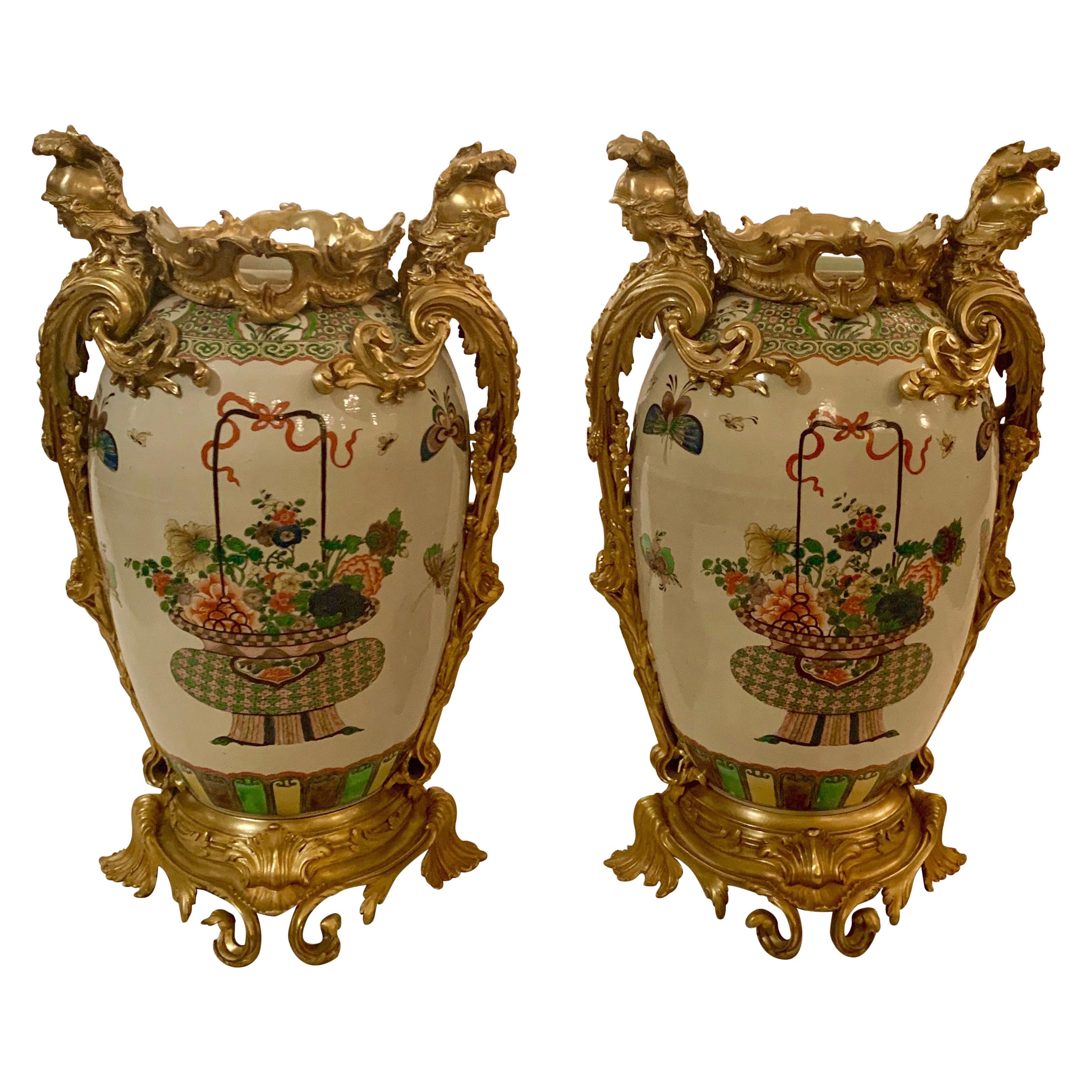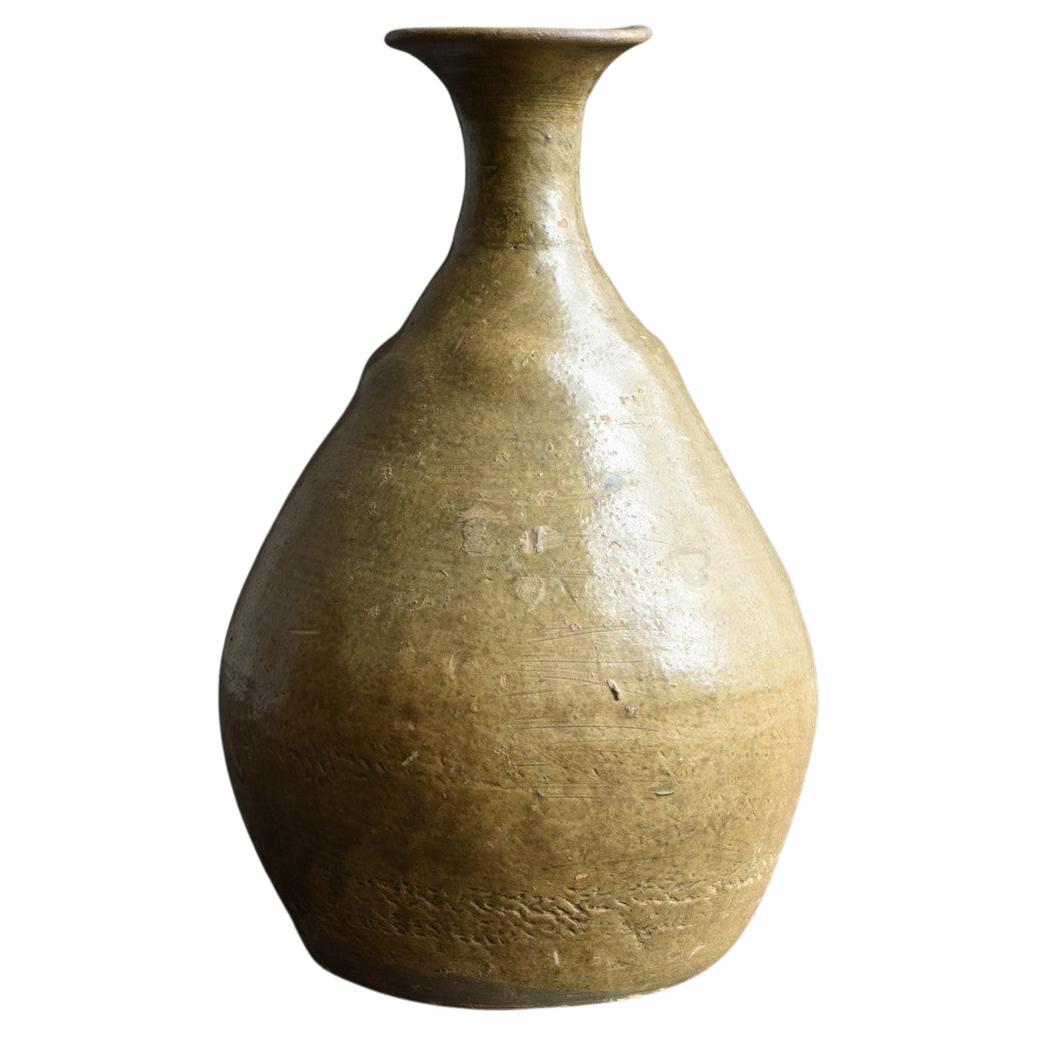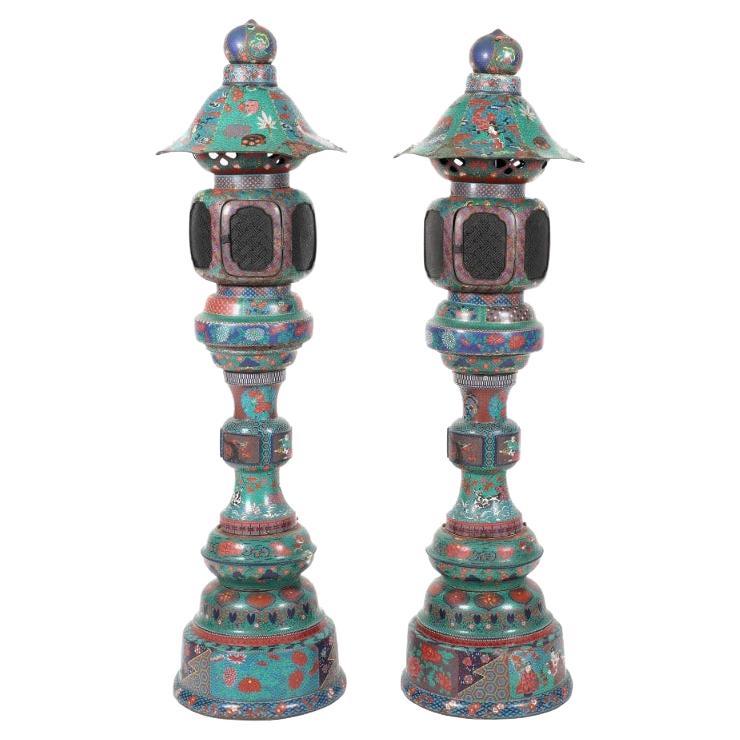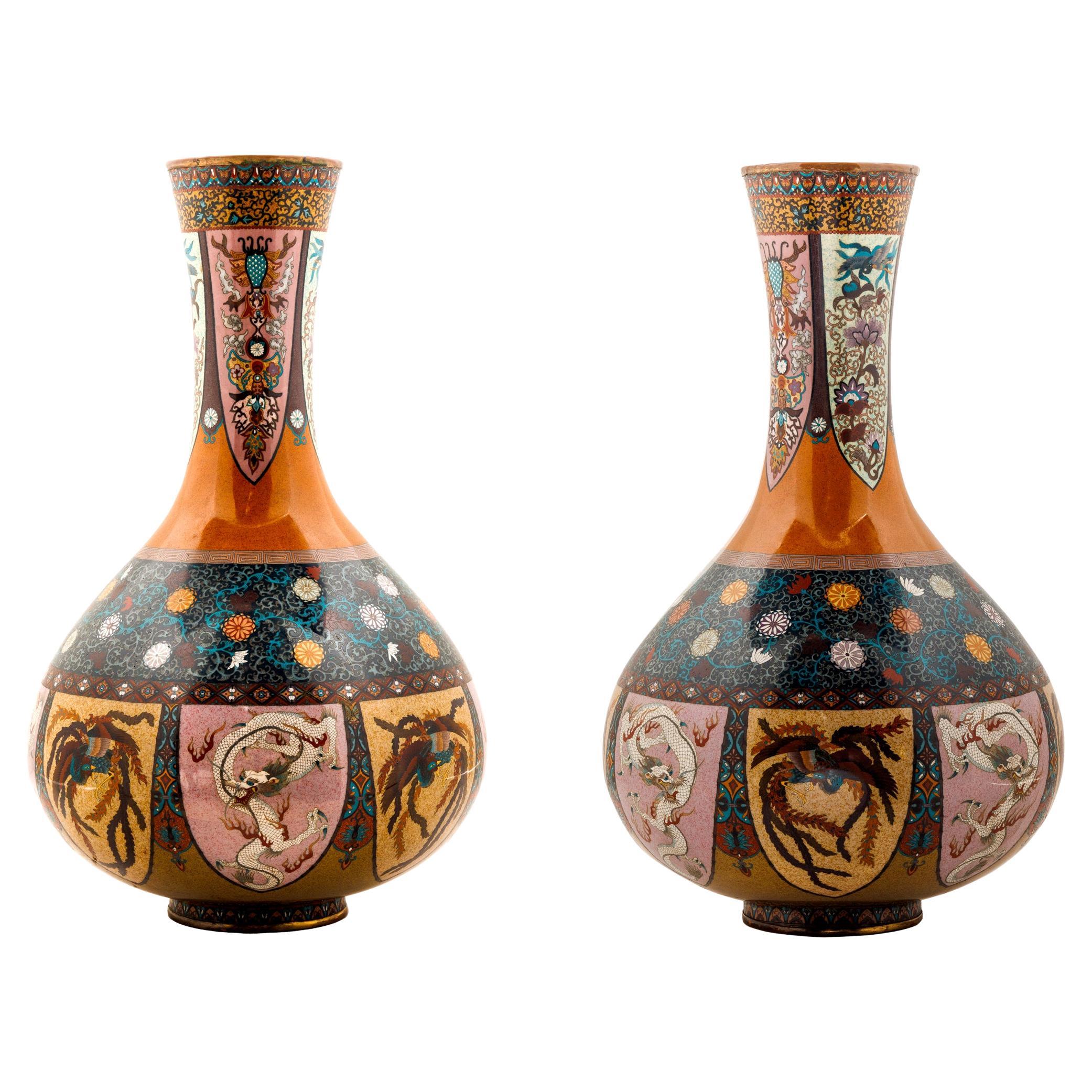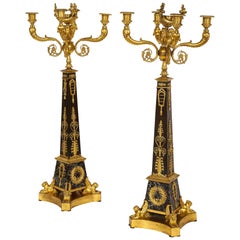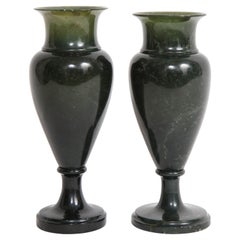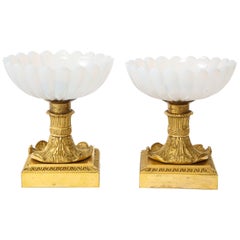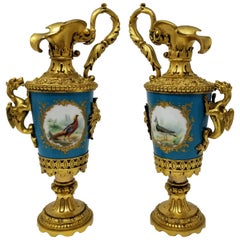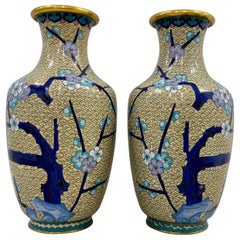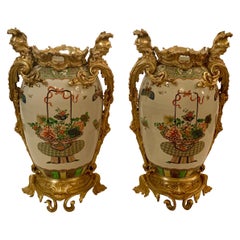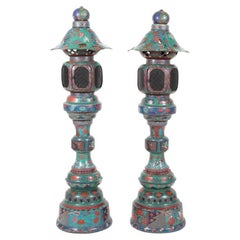Items Similar to Empire Ormolu-Mounted Malachite Ewers Attributed to Claude Galle, Russian, Pair
Want more images or videos?
Request additional images or videos from the seller
1 of 21
Empire Ormolu-Mounted Malachite Ewers Attributed to Claude Galle, Russian, Pair
About the Item
A pair of Empire Ormolu-Mounted Malachite Ewers attributed to Claude Galle, circa 1805, Possibly Made For The Russian Market. Each with an ovoid body applied with an ormolu band depicting winged figures feeding with panthers, the top and base with pierced foliate and palmette mounts, with hippocampus-form handle terminating in a ram's mask, on malachite shaft and square base, minor variations to chasing, particularly to handles. These precious ewers, with their striking and unusual malachite bodies, were likely made to appeal to the Russian market. Malachite is most closely associated with the Russian Imperial Factories of the 18th and 19th centuries, whose highly skilled stone-cutting led to the creation of some of the most beautiful objets d'art. The Imperial administration held the sole right to mine for malachite from the Ural Mountains, so the products of these factories were almost exclusively destined for Imperial palaces or to be given as diplomatic gifts, making them very desirable. These ewers were created using the technique of ‘Russian mosaic,” where malachite is sawn into very thin slices, applied to a stone or metal ground with the veins laid to form pleasing patterns and then polished, making the joins barely visible. By creating malachite objects that call to mind the Imperial Factories of Russia and mounting them with fine ormolu details, the makers of the present ewers deftly balance Russian taste with French refinement.
The ovoid form of the ewers with their slender elongated spouts and figural handles are closely related to the oeuvre of the bronzier Claude Galle (1759-1815). Galle flourished during the Empire when he supplied bronzes and ormolu mounts for furniture, clocks and other decorative items to Compiègne, Versailles, Saint-Cloud, the Grand Trianon, and various other Courts throughout Europe. These ewers are similar to Galle's 'maiden' vases and his popular series of ewers, examples of which are illustrated in H. Ottomeyer, P. Pröschel et al., Vergoldete Bronzen, Munich, 1986, vol. I, figs. 5.12.6, 5.12.8 and 5.12.9, pp. 364 – 365 and are also at Pavlovsk, illustrated in E. Ducamp ed., Pavlovsk The Collections, Paris, 1993, p. 179. The vases and ewers all bear exquisitely detailed handles, mostly in the form of winged maidens rather than the more rare hippocampi figures employed on the present pair.
Measures: 21 ½ in. (54.5 cm.) high.
- Attributed to:Claude Galle (Maker)
- Dimensions:Height: 21.5 in (54.61 cm)Width: 5 in (12.7 cm)Depth: 6.5 in (16.51 cm)
- Sold As:Set of 2
- Style:Empire (Of the Period)
- Materials and Techniques:
- Place of Origin:
- Period:1800-1809
- Date of Manufacture:1805
- Condition:Wear consistent with age and use.
- Seller Location:New York, NY
- Reference Number:1stDibs: LU919521375932
About the Seller
4.9
Platinum Seller
Premium sellers with a 4.7+ rating and 24-hour response times
Established in 1820
1stDibs seller since 2011
177 sales on 1stDibs
Typical response time: 1 hour
- ShippingRetrieving quote...Shipping from: New York, NY
- Return Policy
Authenticity Guarantee
In the unlikely event there’s an issue with an item’s authenticity, contact us within 1 year for a full refund. DetailsMoney-Back Guarantee
If your item is not as described, is damaged in transit, or does not arrive, contact us within 7 days for a full refund. Details24-Hour Cancellation
You have a 24-hour grace period in which to reconsider your purchase, with no questions asked.Vetted Professional Sellers
Our world-class sellers must adhere to strict standards for service and quality, maintaining the integrity of our listings.Price-Match Guarantee
If you find that a seller listed the same item for a lower price elsewhere, we’ll match it.Trusted Global Delivery
Our best-in-class carrier network provides specialized shipping options worldwide, including custom delivery.More From This Seller
View AllLarge Pair of French Empire Period Candelabra, Attributed to Claude Galle
By Claude Galle
Located in New York, NY
A magnificent large pair of five-light doré bronze and patinated bronze Empire period candelabra, attributed to Claude Galle made in the early 1800s. This pair of candelabra are set ...
Category
Antique 1810s French Empire Candelabras
Materials
Marble, Bronze
Pair of Early 19th Century Russian Hand-Carved Spinach Green Jade Vases
By Imperial Russia
Located in New York, NY
A Fantastic Pair of Russian 19th Century Hand-Carved and Hand-Polished Spinach Green Jade vases, Attributed to the Imperial Russian Lapidary, with m...
Category
Antique Early 19th Century Russian Vases
Materials
Jade
Beautiful Pair of Russian Imperial Glass and Ormolu Mounted Tazza Centerpieces
By Imperial Russia
Located in New York, NY
A beautiful pair of Russian Empire Imperial Glass Manufactury and ormolu mounted white opalescent tazza centrepieces, each white opaline bowl beautifully hand cut and hand polished in flutted design with ribbed border; the Ormolu very finely hand chisseled and finished in two tome dore bronze gold...
Category
Antique 1830s Russian Empire Planters, Cachepots and Jardinières
Materials
Bronze
Pair of French Sèvres Porcelain Ormolu Mounted Ewers with Birds/Flowers/Dragons
By Manufacture Nationale de Sèvres
Located in New York, NY
A beautiful pair of 19th century Louis XVI style French Sèvres style Porcelain and ormolu-mounted Ewers with dragon handles, birds and flowers. The porcelain is mounted on the finest quality of hand-chiseled and chased Doré bronze mounts. The top of the spouts are decorated with beautiful vine-like patterns. The handles are exquisitely cast with a flowing design with acanthus leaves resting on each. Two Doré bronze dragons can be found climbing towards the top of each ewer with wings and long tails. Underneath each handle are two finely cast doré bronze lions masks with acanthus mane. The porcelain is mounted on the finest quality of hand-chiseled and chased doré bronze mounts. The top of the spouts are decorated with beautiful vine-like patterns. The handles are exquisitely cast with a flowing design with acanthus leaves resting on each. Two Doré bronze dragons can be found climbing towards the top of each ewer with wings and long tails. Underneath each handle are two finely cast doré bronze lions masks with acanthus mane. The porcelain of each ewer is very finely hand painted in Sèvres celeste...
Category
Antique Mid-19th Century French Louis XVI Vases
Materials
Bronze
Pair of Russian Ormolu Mounted Fluted White Opaline Crystal Covered Bottles
Located in New York, NY
A fine pair of 19th century Louis XVI style Russian hand diamond-cut white opalescent crystal and ormolu-mounted perfume bottles. This pair of hand diamond-cut crystal perfume bottle...
Category
Antique 19th Century Russian Louis XIV Bottles
Materials
Crystal, Bronze
$7,880 Sale Price / set
20% Off
A Fine Pair of Russian Empire Period Malachite And Ormolu Obelisks, Early 1800's
Located in New York, NY
A Monumental and Quite Rare Pair of 19th Century Russian Empire Ormolu Mounted Malachite Obelisks with Maiden Ormolu Mounts. Each obelisk is complete with four sides which terminate upwards to a triangular point. The bases are fitted with ormolu mounts which include hand-chased and hand-chiseled maidens holding flaming torches in either hand and on the other panel decoration of a vine with a winged bow. On top of the large ormolu mounts are smaller mounts which depict child masks in wings. Underneath and on top of the square base are ormolu mounts which depict acanthus leaves flourishing throughout with hand-chased and hand-chiseled fluted veins. The entire body of the obelisk is veneered with the most incredible and highest quality antique Russian malachite...
Category
Antique 1830s Russian Empire Obelisks
Materials
Malachite, Ormolu
You May Also Like
Cloisonne Vases, a Pair, Early to Mid 20th Century
Located in San Francisco, CA
Cloisonne vases, a pair - early to mid 20th century
Gorgeous motif of cherry blossoms in blue and birds agains a lovely cream background
Measures: 3" diameter at the base x 6" ...
Category
Mid-20th Century Chinese Chinese Export Vases
Materials
Metal, Enamel
Pair of Antique Chinese Urns with Ormolu Mounts
Located in New Orleans, LA
These are magnificent urns in the Chien Ling style. Very beautiful colors on the vases and of course, the ormolu trim is wonderful.
Category
Antique Late 19th Century Chinese Ceramics
Materials
Ormolu
$66,000 / set
Korean Very Old Pottery Vase/10th Century to 14th Century/Goryeo Dynasty
Located in Sammu-shi, Chiba
This is Korean pottery made between the 10th century and the 14th century.
At that time, it was called the Goryeo Dynasty, and various objects such as metalwork and pottery were mad...
Category
Antique 15th Century and Earlier South Korean Other Vases
Materials
Pottery
Large Pair of Japanese Cloisonne Enamel Lanterns Attributed to Kaji Tsunekichi
Located in New York, NY
A Large Pair of Japanese Cloisonne Enamel Lanterns Attributed to Kaji Tsunekichi, Edo Period, 19th century
Japanese cloisonne lanterns were made during the Meiji period, from the late 19th to early 20th century, and were often used as decorative lighting fixtures in temples and shrines.
Kaji Tsunekichi (1866-1916) was a Japanese cloisonné artist who was active in the late 19th and early 20th centuries. He was born in Tokyo and learned the art of cloisonné from his father, Kaji Sataro, who was also a cloisonné artist. He was renowned for his mastery of the shippo-yaki technique, which involves creating intricate designs with thin wires on a metal base before filling in the spaces with enamel.
Tsunekichi was known for his exceptional technical skills and his ability to create intricate designs with vibrant colors. His works often featured nature motifs, such as flowers, birds, and fish, which were rendered in a highly detailed and naturalistic style. He also experimented with new techniques, such as plique-à-jour, a type of cloisonné that creates a stained-glass effect.
Tsunekichi's works were highly prized during his lifetime and continue to be sought after by collectors today. He won numerous awards for his cloisonné creations, including a Gold Medal at the 1900 Exposition Universelle in Paris. His works are characterized by their fine wirework, precise enamel application, and attention to detail.
Some of Tsunekichi's most famous works include a pair of large cloisonné vases...
Category
Antique 19th Century Japanese Edo Metalwork
Materials
Copper, Enamel
Large Pair of Japanese Cloisonne Enamel Vases Attributed to Honda Yasaburo
Located in New York, NY
A large pair of Japanese Cloisonne Enamel vases attributed to Honda Yasaburo, 19th century.
Finley decorated with the rich enamel colors of orange and green, these vases are desig...
Category
Antique 19th Century Japanese Meiji Metalwork
Materials
Copper, Enamel
1940s Pair of Bronze Polychrome Enameled Vases
Located in Marbella, ES
1940s pair of bronze polychrome enameled vases in Arabic style, using ornamental geometric and floral patterns.
Category
Mid-20th Century Asian Jars
Materials
Bronze
$16,947 / set
Recently Viewed
View AllMore Ways To Browse
Vase 1922
Cloisonne Vases With Flowers
Postmodern Ceramic
Reproduction Antique Bedroom Furniture
Retro Etched Glass Vase
Rococo Style Vase
Rust Vase
Antique Art Deco Pottery
Art Deco Bedroom Set 1920
Art Deco Metal Glass Bedroom
Drip Pottery
Iridescent Green Glass
Opaque White Vase
Pink Italian Blown Glass Vase
Purple Vase 1960
Red Plant Vase
West German Vase Scheurich
Ancient Greek Vessel
